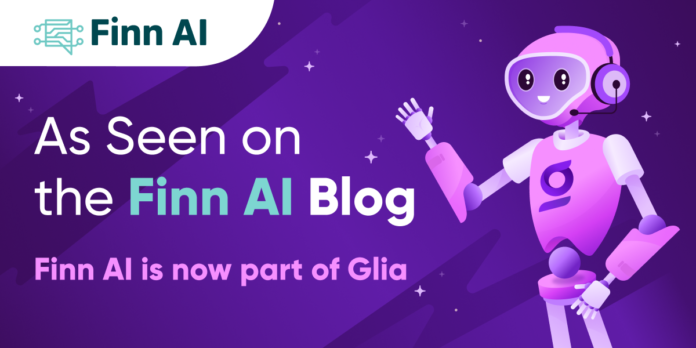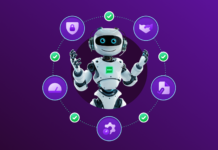This post appeared on the Finn AI blog, which is now part of Glia, and was originally published on FinTech Weekly.
Artificial intelligence is often referred to as the fourth industrial revolution. This revolution is already transforming most industries and organizations, none more so than banks.
One of the lesser understood effects of AI is how it is changing the roles that we, as employees, play now and in the future. A recent Gartner report predicts that one in five employees will have AI as their coworker by 2022. What will this mean for bank employees? And what are you doing to prepare your workforce for this new economy?
We know that AI has a mixed reputation among frontline staff today. Some workers are excited to adopt the new technology and others are concerned about their job security. The reality is that some jobs will be displaced by AI — but far more will be created. In fact, Gartner predicts that in 2020, artificial intelligence will create 2.3 million jobs and eliminate just 1.8 million. Along with job creation, many thought leaders in this space predict that AI will create new lines of business that we can’t even imagine today.
While AI is still new, it’s time for organizational leaders to start thinking about their workforce and how they can help support the ever-increasing number of AI applications. With that in mind, we’ve outlined three considerations that will help you set up your workforce for success with AI.
“In 2020, artificial intelligence will create 2.3 million jobs and eliminate just 1.8 million.”
— Gartner
1. Create a culture of trust
Successful AI implementations require a team effort. Teams will only get behind your initiatives if they feel involved, understand what you’re trying to achieve, and trust that the technology is working to better the organization.
Encourage an open culture by promoting curiosity, cross-functional collaboration, and process experimentation. By involving everyone early on, you’ll encourage positive attitudes toward the changes and greater adoption of AI across the organization.
In order to do this, you must first understand your own technology and ensure that your methods are documented internally for all to see. Consider the three Ds:
- Data: What data is being used to teach the AI? Do you own the data? What are your data storage and usage policies?
- Defense: Can you defend the algorithms that will be used by the AI? Can you explain how they will be combined to guide decision making?
- Direction: What roles and which people will be part of the training methodology for AI? Are you clear about your use case and the value you want to achieve by applying AI?
Transparency across each of the three Ds is vital for building a culture of trust from the top down.
“Business leaders don’t think their workers are ready for AI, yet only 3 percent are reinvesting in training.”
— Accenture
2. Reskill your workforce to sustain, explain, or train AI
Accenture research found that business leaders don’t think their workers are ready for AI, yet only 3 percent are reinvesting in training.
AI is driving demand for new skills in all areas of your business. Preparing your teams for AI is not about hiring people with qualifications in data science, linguistics, and natural language processing — these people are hard to find (and expensive). Smart leaders will look at the amazing resources they already have at their disposal and provide existing employees with the support, training, and tools they need to work alongside AI.
A Massachusetts Institute of Technology report predicts that in the future, all employees will be trainers, explainers, or sustainers of AI. Trainers will teach AI systems how to perform; explainers will liaise between machines and human supervisors; and sustainers will help ensure that AI systems are operating as designed.
Regardless of whether this prediction plays out, people in every role and at every level of your organization should understand the possibilities of AI and actively engage with the technology.
“In the future, all employees will be trainers, explainers, or sustainers of AI.”
— MIT
3. Redefine old processes
AI, particularly conversational AI, can help your teams achieve great things. But it requires a shift in the status quo. For example, when you implement conversational AI in a traditional customer support function, you can’t expect an ideal outcome without altering some of the ways in which your team operates.
Expecting a seamless workflow when transitioning between a chat-based AI messaging platform and a human via phone is unrealistic. It creates a clunky experience for the customer and confusion for your staff. A better approach is to retrain your employees with chat-based messaging technology, allowing them to become familiar with how a chatbot communicates so they can pick up queries seamlessly. 70 percent of consumers prefer messaging over calling for customer support so shifting this process for employees is a win-win for everyone.
There are many differences of opinion on how artificial intelligence will affect our working environment. One thing is for certain: AI is the future and it is imperative that we figure out how to implement these new technologies in a way that will allow everyone to play a part. Conscientious leaders are preparing their employees today and spearheading initiatives that will create the workplace of the future.





